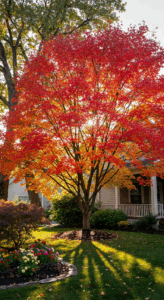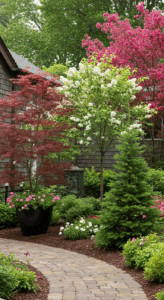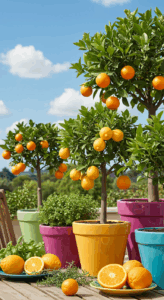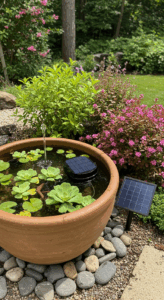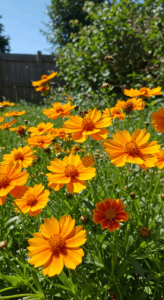1. Space-Saving Superstar: Lettuce Varieties
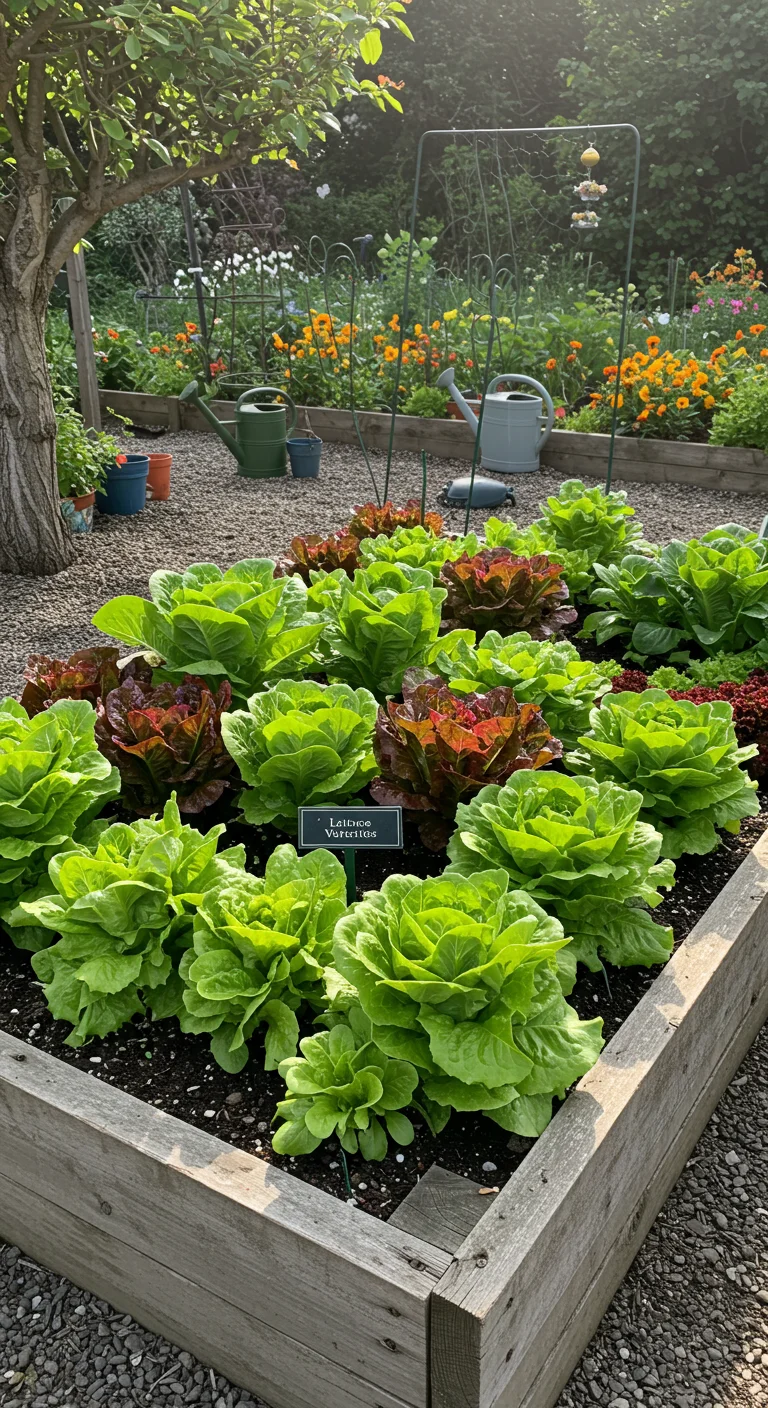
Lettuce varieties are the ultimate space-saving superstar for small raised bed gardening. With their shallow root systems and compact growth habits, they allow gardeners to maximize yield without taking up too much real estate. Varieties such as Butterhead, Romaine, and Looseleaf can be interplanted, enabling you to harvest continuously throughout the growing season. For optimal growth, consider sowing seeds in succession every two to three weeks, ensuring a steady supply of fresh greens. Additionally, these leafy vegetables thrive in cooler temperatures, making them perfect for early spring or late summer planting. Their versatility in salads, sandwiches, and wraps also makes them a staple in any kitchen, highlighting the practicality of including lettuce in your small garden bed.
2. Mini Marvels: Radishes in Raised Beds
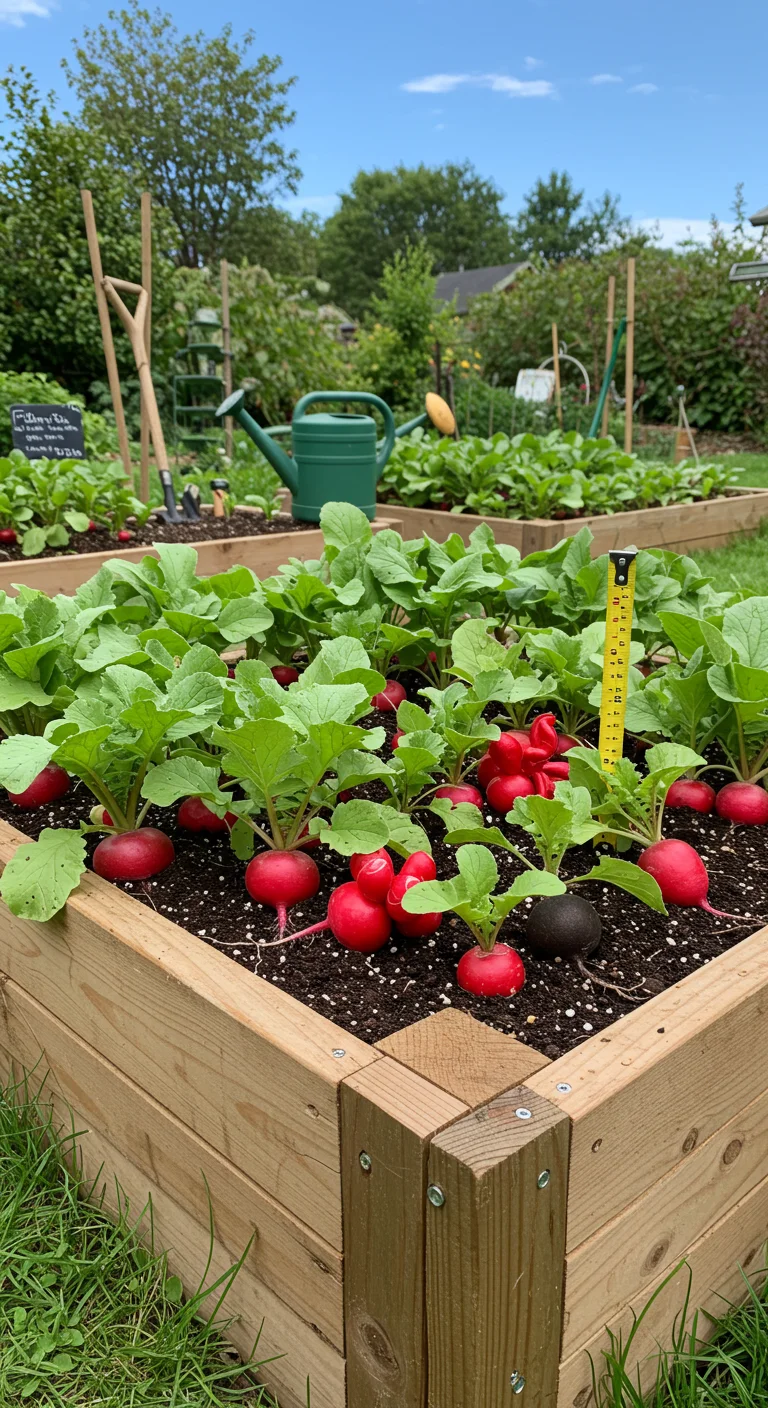
Radishes are a perfect choice for small raised beds, thriving in a compact space while delivering quick, rewarding harvests. These mini marvels can be sown in succession every few weeks, allowing for a continuous supply of fresh roots throughout the growing season. They prefer well-drained soil enriched with organic matter, which enhances their flavor and texture. Radishes enjoy cooler temperatures, making them ideal for spring and fall planting. As they mature, they require minimal maintenance, just occasional watering and weeding. Choose from a variety of colors and shapes, such as the classic red globe or the unique black radish, to add visual interest to your garden. With their fast growth cycle, you can enjoy the satisfaction of harvesting radishes in as little as three weeks after sowing, making them a delightful addition to any small garden project.
3. Tiny Treasures: Baby Carrots for Compact Gardens

Tiny treasures like baby carrots are an excellent choice for compact gardens, particularly in raised beds where space is at a premium. With their short roots and small size, baby carrots can thrive in containers or small plots, making them suitable for urban gardening or limited spaces. They are quick to mature, typically ready to harvest in just 50 to 60 days, allowing for multiple cropping cycles within a single season. Planting them in loose, well-draining soil and ensuring consistent moisture can lead to sweet, crunchy yields. Additionally, baby carrots can be sown in succession every few weeks to provide a continuous harvest throughout the growing season, making them a rewarding choice for small-scale gardeners looking to maximize their yield.
4. Flavorful Foliage: Spinach for Small Spaces
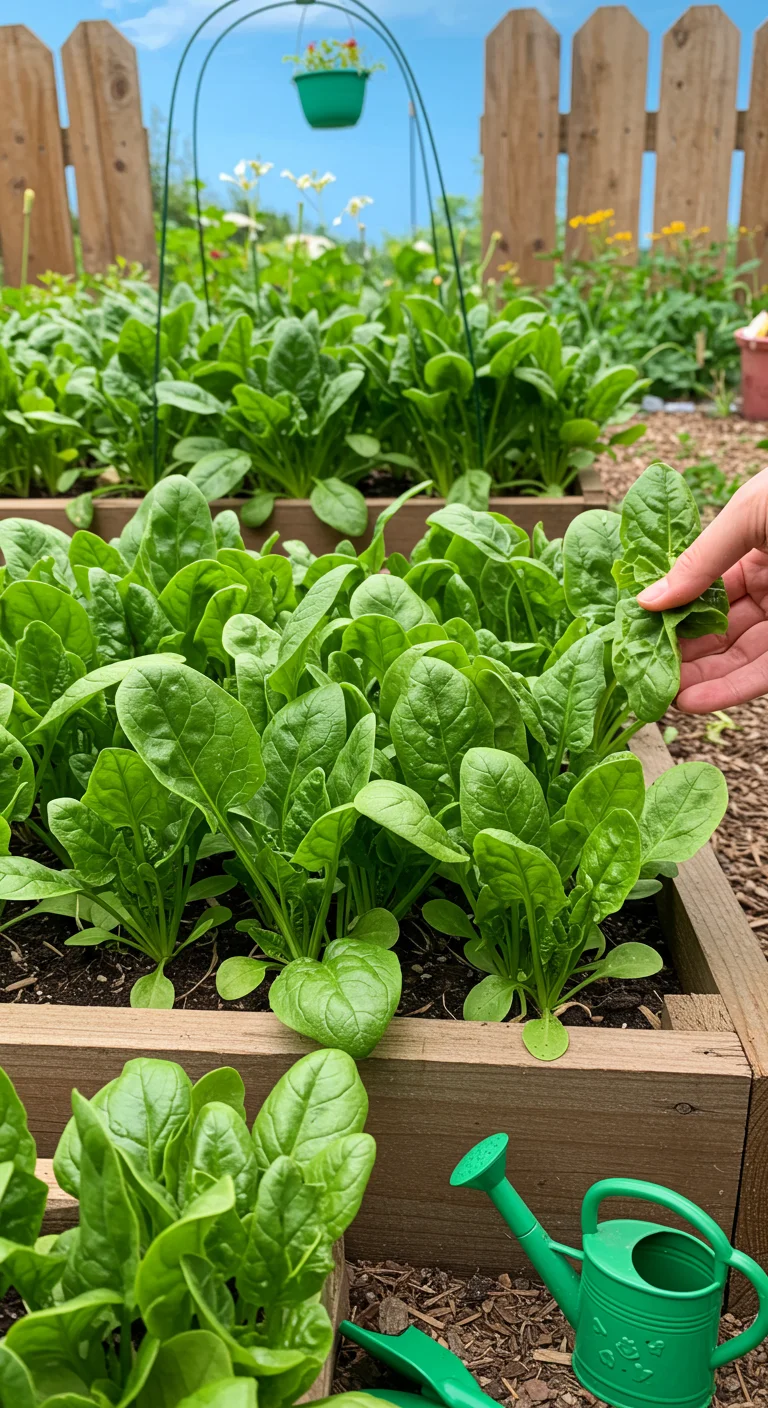
Spinach is an excellent choice for small raised beds, as it thrives in compact spaces while offering a bountiful harvest. This leafy green grows quickly, allowing for multiple harvests throughout the growing season. Plant spinach seeds directly into the soil in early spring or late summer for a fall crop, ensuring they receive at least 4-6 hours of sunlight daily. To maximize space, consider using a square foot gardening method, planting in 4-inch squares, which can yield several plants per square. Regular watering and nutrient-rich soil will keep your spinach vibrant and flavorful. Plus, with varieties like ‘Baby Leaf’ and ‘Flat Leaf’, you can enjoy tender leaves ideal for salads or cooking, making spinach a versatile addition to any small garden.
5. Compact Crunch: The Best Cucumbers to Grow
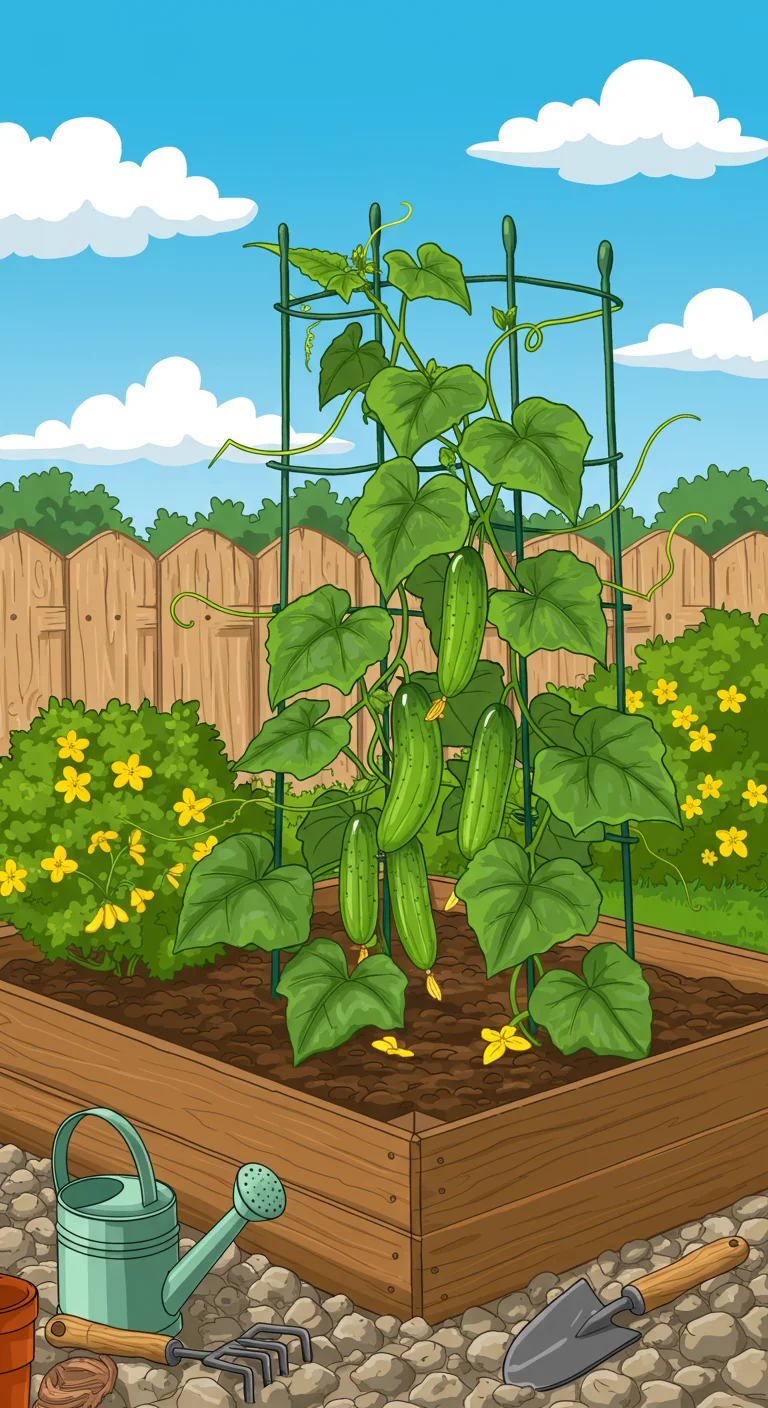
When it comes to growing cucumbers in a compact raised bed, selecting the right variety is crucial for maximizing your harvest in limited space. Consider dwarf or bush cultivars such as ‘Bush Pickle’ or ‘Spacemaster,’ which are specifically bred to produce abundant yields without sprawling extensively. These varieties typically grow to about 2 feet in height and require minimal staking or trellising, making them ideal for smaller gardens. Additionally, these cucumbers mature quickly, allowing you to enjoy fresh, crunchy fruits in as little as 50 days. Ensure to provide adequate sunlight, consistent watering, and rich soil for the best results, and you’ll be delighted with the crisp, refreshing taste of homegrown cucumbers in your salads and sandwiches.
6. Peas on Earth: Growing Sweet Snap Peas
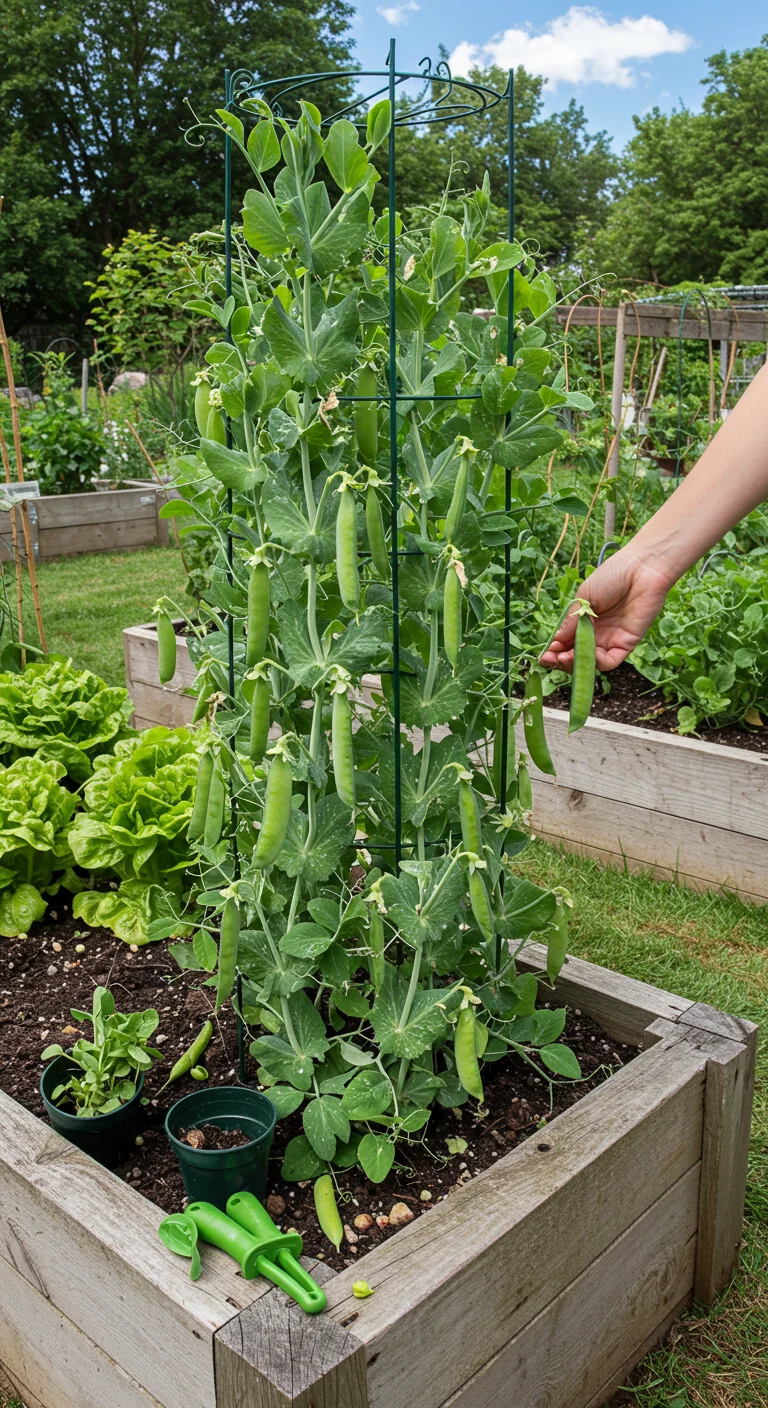
Sweet snap peas are an excellent choice for small raised beds, offering both sweet flavor and crunchy texture. To grow them successfully, choose a sunny location with well-drained soil enriched with compost. Plant seeds directly in the soil about 1-2 inches apart and 1 inch deep, ensuring they have a trellis or support to climb as they grow. Regular watering is essential, especially during dry spells, but avoid waterlogging. Harvest snap peas when they are plump and firm, usually about 60 days after planting, for the best taste. Not only do they provide a delicious snack, but they also fix nitrogen in the soil, enriching it for future crops, making them a beneficial addition to your garden.
7. Petite Power: Bush Beans to Maximize Yield
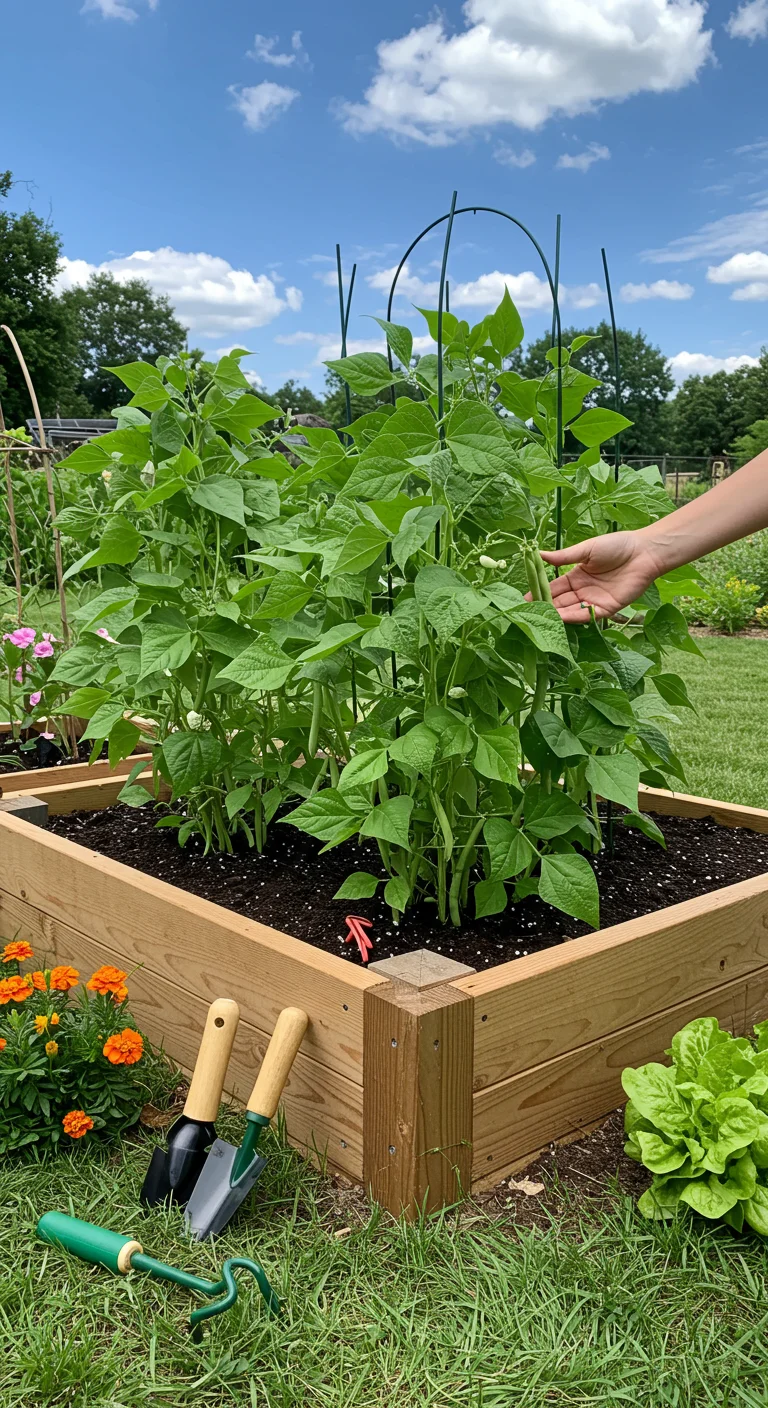
Bush beans are the perfect solution for maximizing yield in small raised beds due to their compact growth habit and prolific production. Unlike pole beans, which require vertical support, bush beans grow to a height of around 1 to 2 feet, making them ideal for tight spaces. They thrive in well-drained soil enriched with organic matter and can be sown directly into the bed after the last frost. Planting them in succession every couple of weeks can ensure a continuous harvest throughout the summer. Additionally, bush beans are generally low-maintenance, resisting pests and diseases effectively, which makes them a great choice for novice gardeners looking to maximize their small gardening area with high yields. Consider varieties like ‘Blue Lake’ or ‘Provider’ for robust growth and excellent flavor.
8. Herbs Galore: Basil for Flavorful Touches
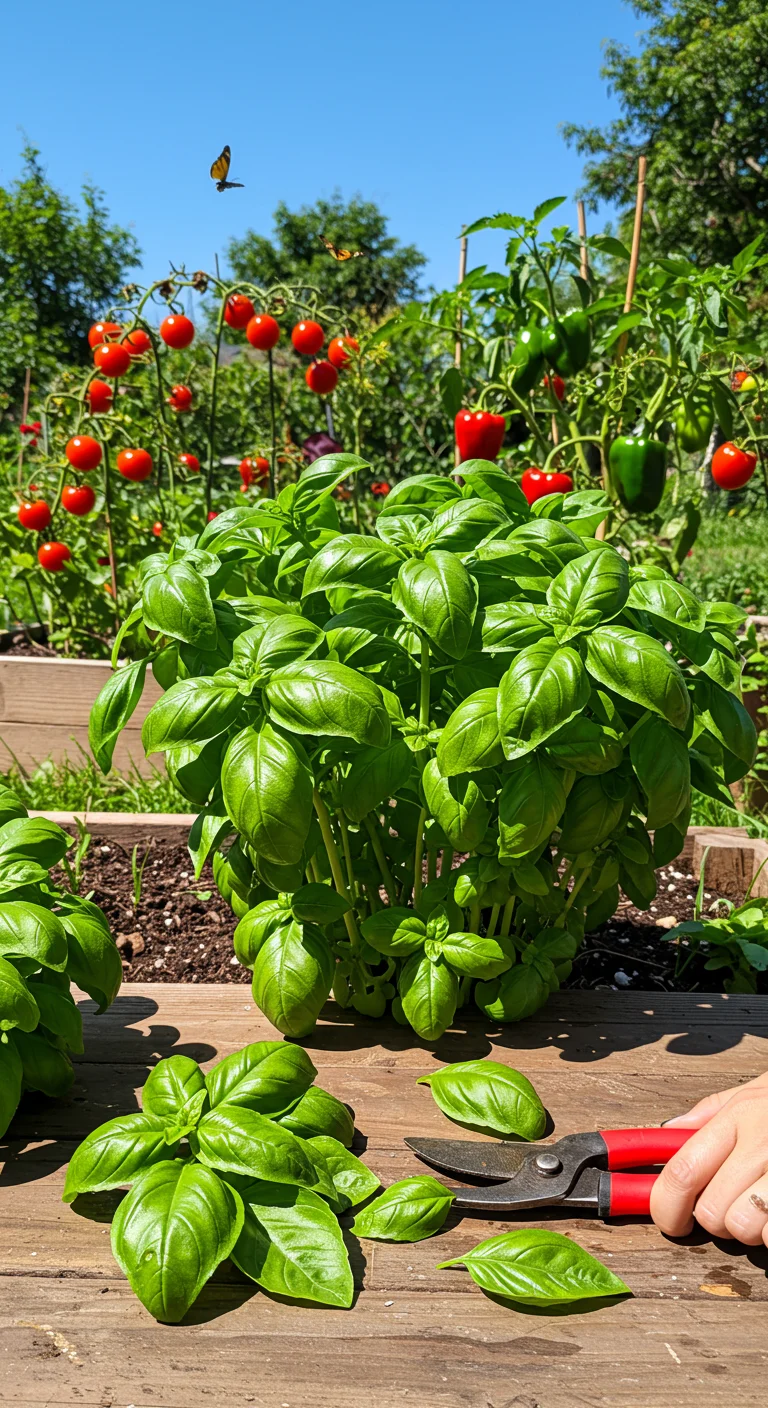
Basil is a must-have herb for any small raised bed garden, known for its aromatic leaves and versatility in the kitchen. It thrives in warm weather and enjoys full sunlight, making it perfect for summer planting. When grown in a raised bed, basil can flourish alongside companion plants like tomatoes and peppers, enhancing their flavors while deterring pests. Regular pruning encourages bushy growth and prevents flowering, which can alter the leaf’s taste. Harvesting basil is simple; just snip off the leaves as needed, and they’ll continue to grow. Additionally, you can dry or freeze excess basil to enjoy its flavor year-round. Incorporating basil into your culinary creations, from pesto to salads, elevates dishes with its fresh, vibrant taste, making it an essential addition to your small garden space.
9. Zucchini Wonders: Small Varieties for Your Bed
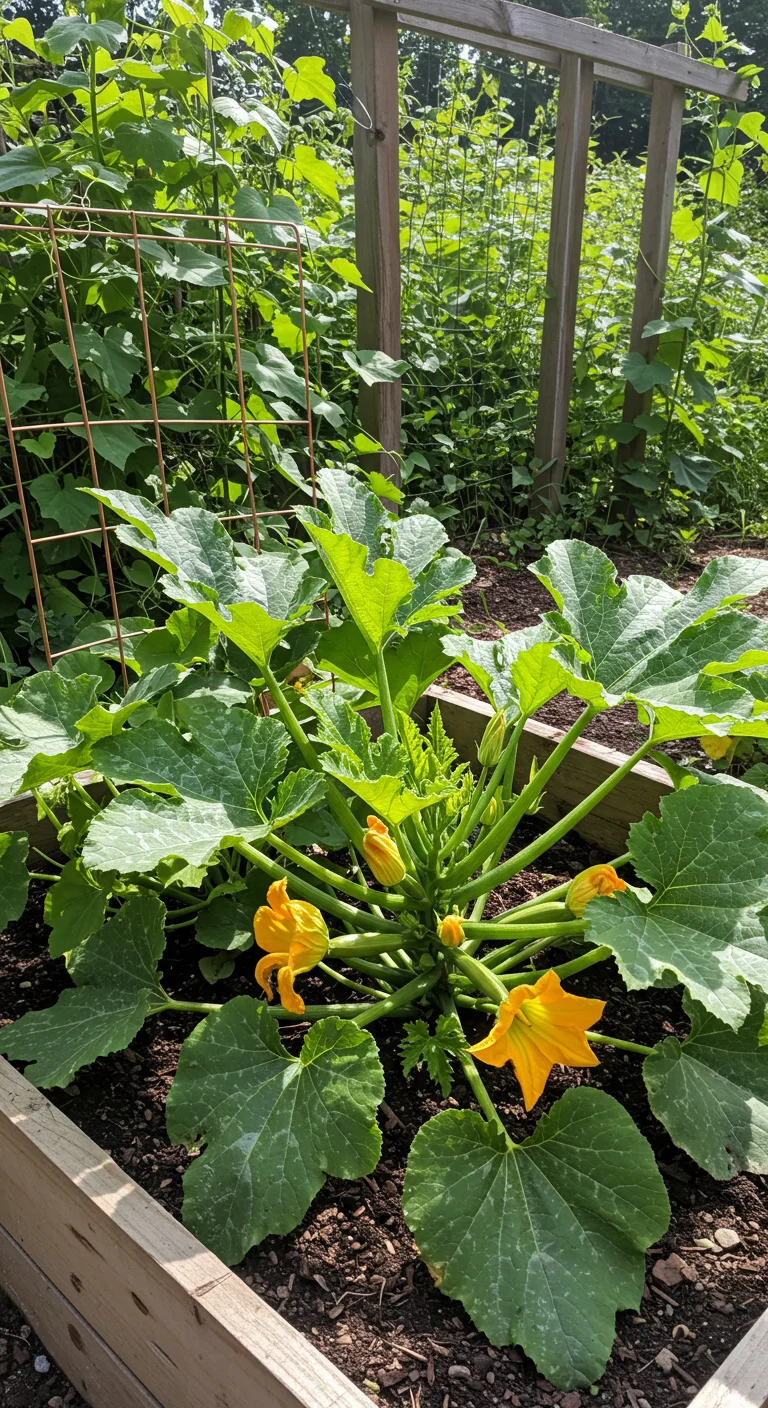
When space is limited in your raised bed garden, consider growing small varieties of zucchini, such as ‘Patio Star’ or ‘Eight Ball’. These compact plants typically reach only 2 feet in height and spread, making them ideal for small spaces. They offer delicious, tender fruits that can be harvested frequently to encourage further growth. Plant them in well-draining soil enriched with compost and ensure they receive full sun for optimal yield. With proper care, you can expect to enjoy a bountiful harvest throughout the summer. Additionally, zucchini plants are not only productive but also visually appealing, with large green leaves that can add beauty to your garden bed.
10. Colorful Companions: Growing Bell Peppers
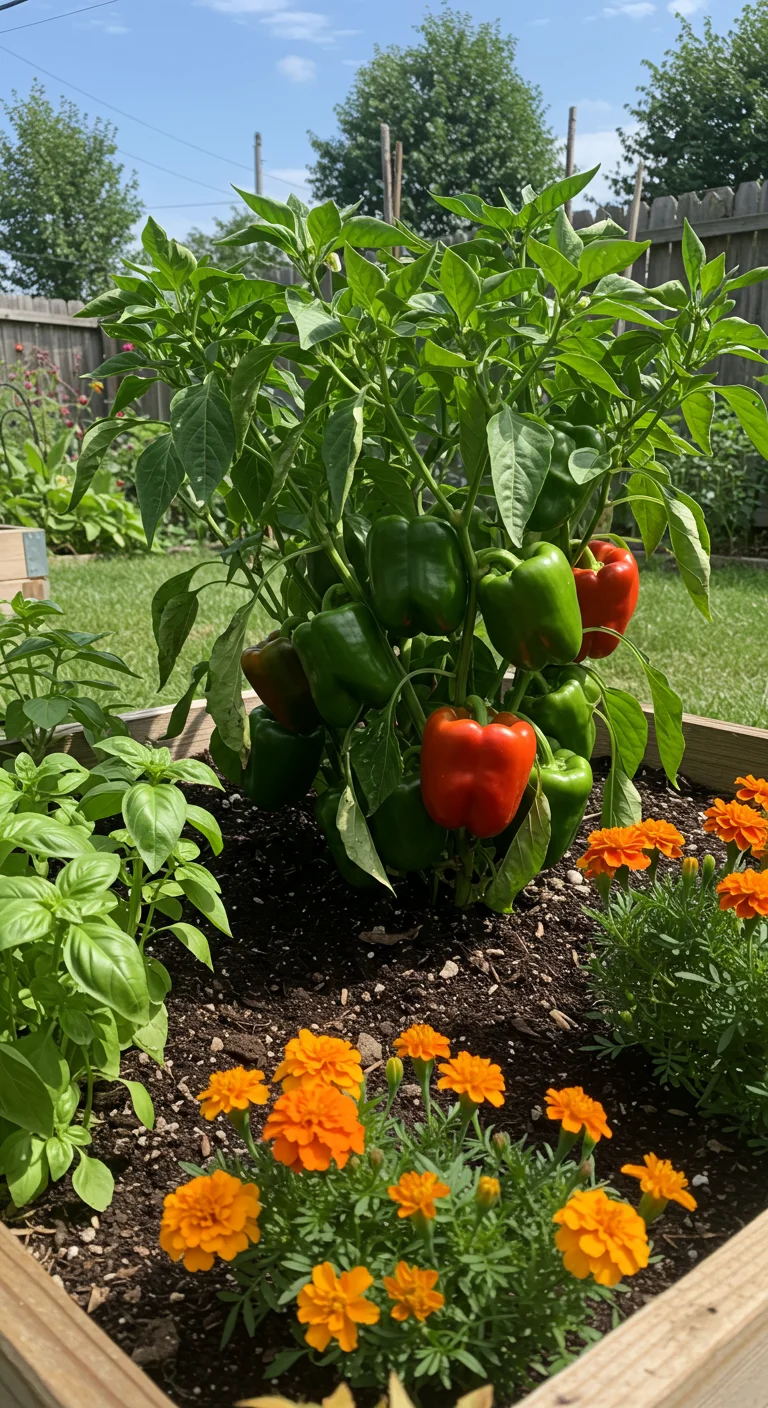
Growing bell peppers in a small raised bed is a rewarding endeavor that adds vibrant color and flavor to your garden. These versatile vegetables thrive in well-draining soil enriched with organic matter, and they prefer full sun exposure for at least six hours a day. Start seeds indoors 8-10 weeks before the last frost or purchase young plants from a nursery for immediate planting. Space your peppers 18-24 inches apart to allow for optimal growth, and consider companion planting with herbs like basil or marigolds to deter pests. Regular watering is essential, but ensure the soil does not become waterlogged. With proper care, you can enjoy a bountiful harvest of sweet, crunchy bell peppers in a variety of colors, perfect for salads, stir-fries, or grilling.
11. Bite-Sized Brilliance: Cherry Tomatoes
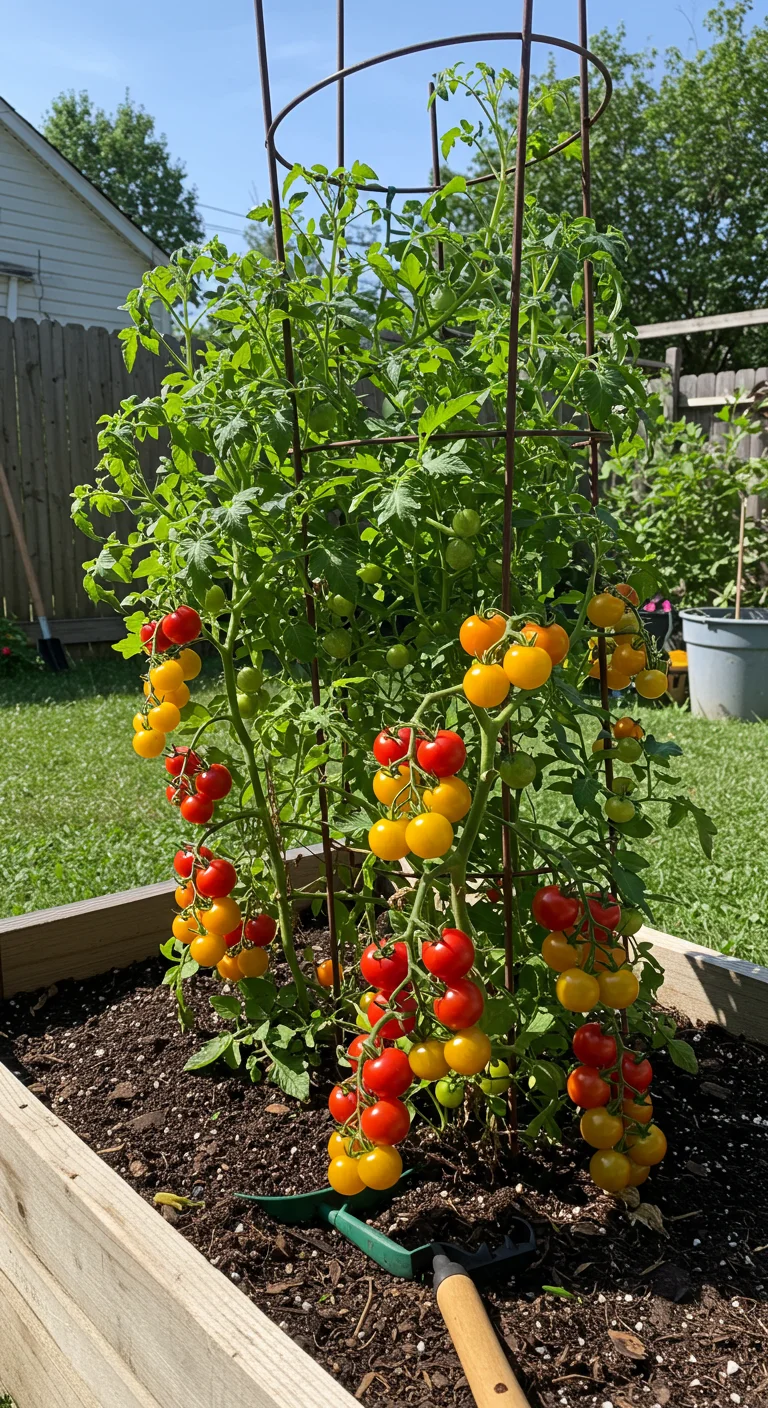
Cherry tomatoes are a fantastic choice for small raised beds, offering a vibrant splash of color and a burst of flavor in a compact space. These bite-sized fruits thrive in well-drained soil and require full sun for optimal growth, making them perfect for small gardens. With their indeterminate growth habit, cherry tomato plants can be trained vertically using trellises or cages, maximizing your growing area. Regular watering and fertilization are essential for a bountiful harvest, typically yielding fruit in about 60-75 days from planting. Harvest them regularly for the best taste, as they are sweetest when fully ripe. Their versatility in salads, snacking, or cooking makes them a delightful addition to any small garden.
12. All About Onions: Green Onions in Raised Beds
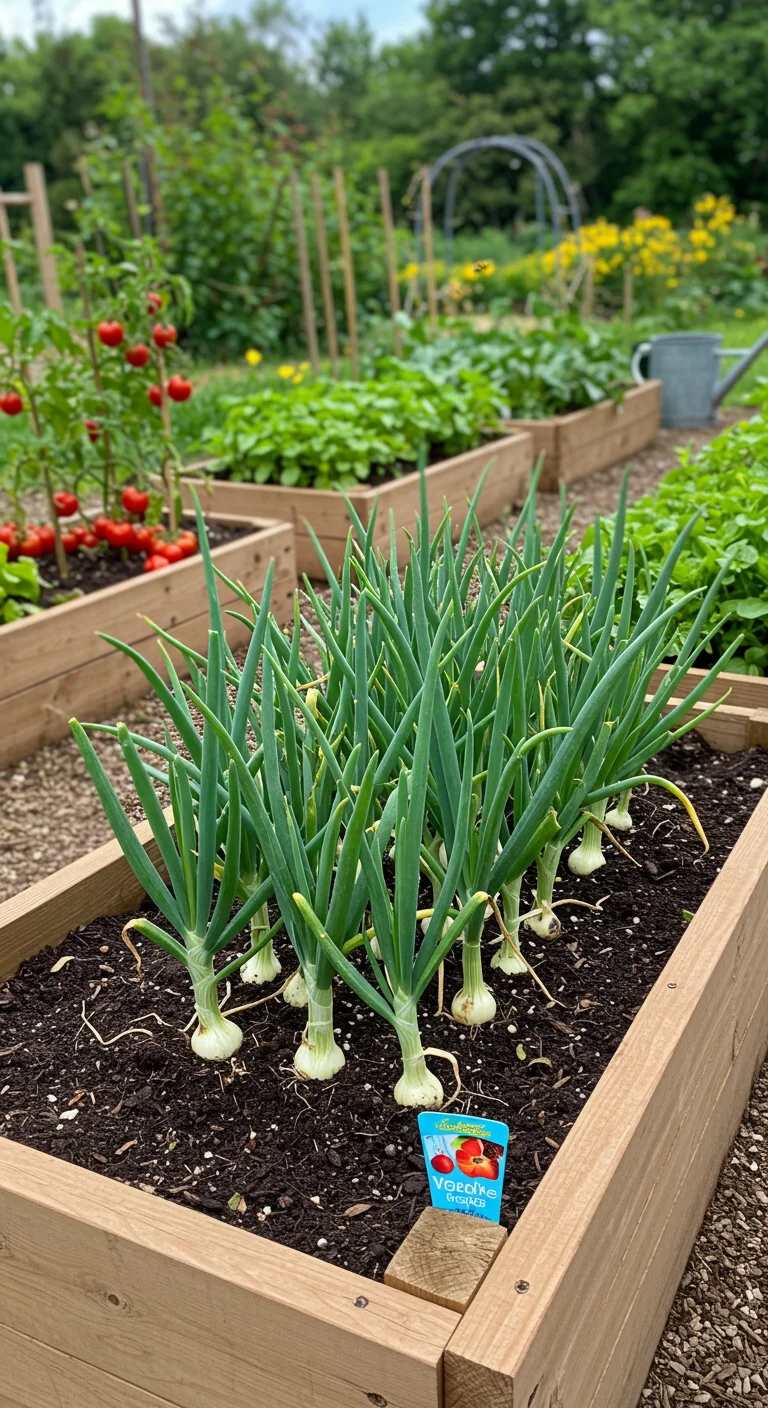
Green onions, also known as scallions or spring onions, are an excellent choice for small raised beds due to their compact growth habit and minimal space requirements. They thrive in rich, well-drained soil, and can be sown directly into the bed or planted from store-bought bulbs. To ensure a continuous harvest, consider planting them in succession every few weeks. Green onions prefer full sun but can tolerate partial shade, making them versatile for various garden locations. Regular watering is essential, particularly in hot weather, to maintain their crispness. Harvesting is simple; just snip the green tops as needed, allowing the bulbs to continue growing. This not only maximizes your yield but also ensures fresh flavor for your dishes.
13. Vibrant Veggies: Growing Beets in Tight Spaces
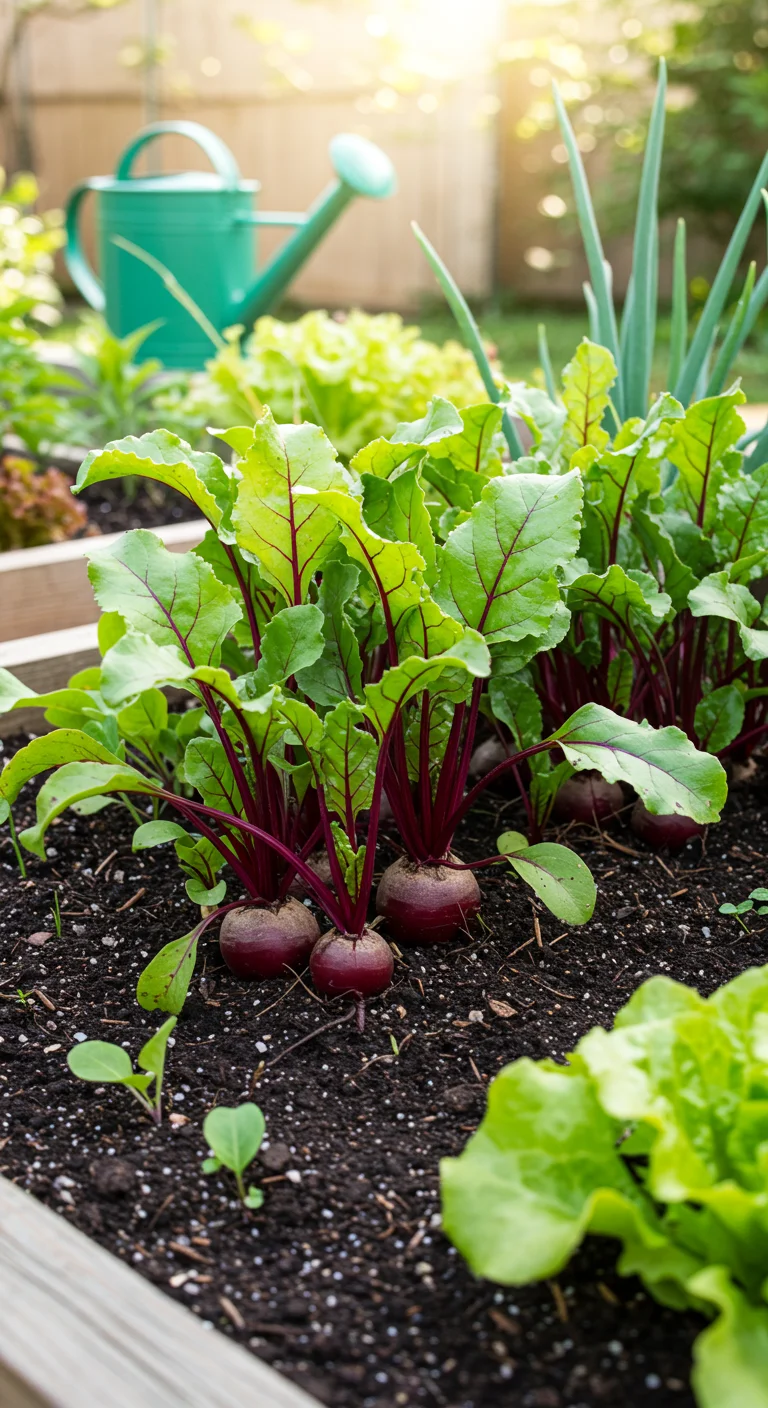
Growing beets in tight spaces is not only feasible but can yield delicious results in limited areas, such as small raised beds. These hardy root vegetables thrive in well-drained soil enriched with organic matter and can be sown directly into the ground or started indoors for an earlier harvest. Space the seeds about 2-4 inches apart and thin them out as they grow to ensure adequate room for bulb formation. Beets prefer cooler temperatures, making them ideal for spring and fall planting. Regular watering is essential to keep the soil moist but not waterlogged, promoting healthy growth. Additionally, consider companion planting with crops like lettuce or onions, which can benefit from the shared space without overshadowing the beets. With proper care, you can enjoy a bountiful beet harvest despite tight gardening conditions.
14. Rooted in Flavor: Radicchio in Your Garden
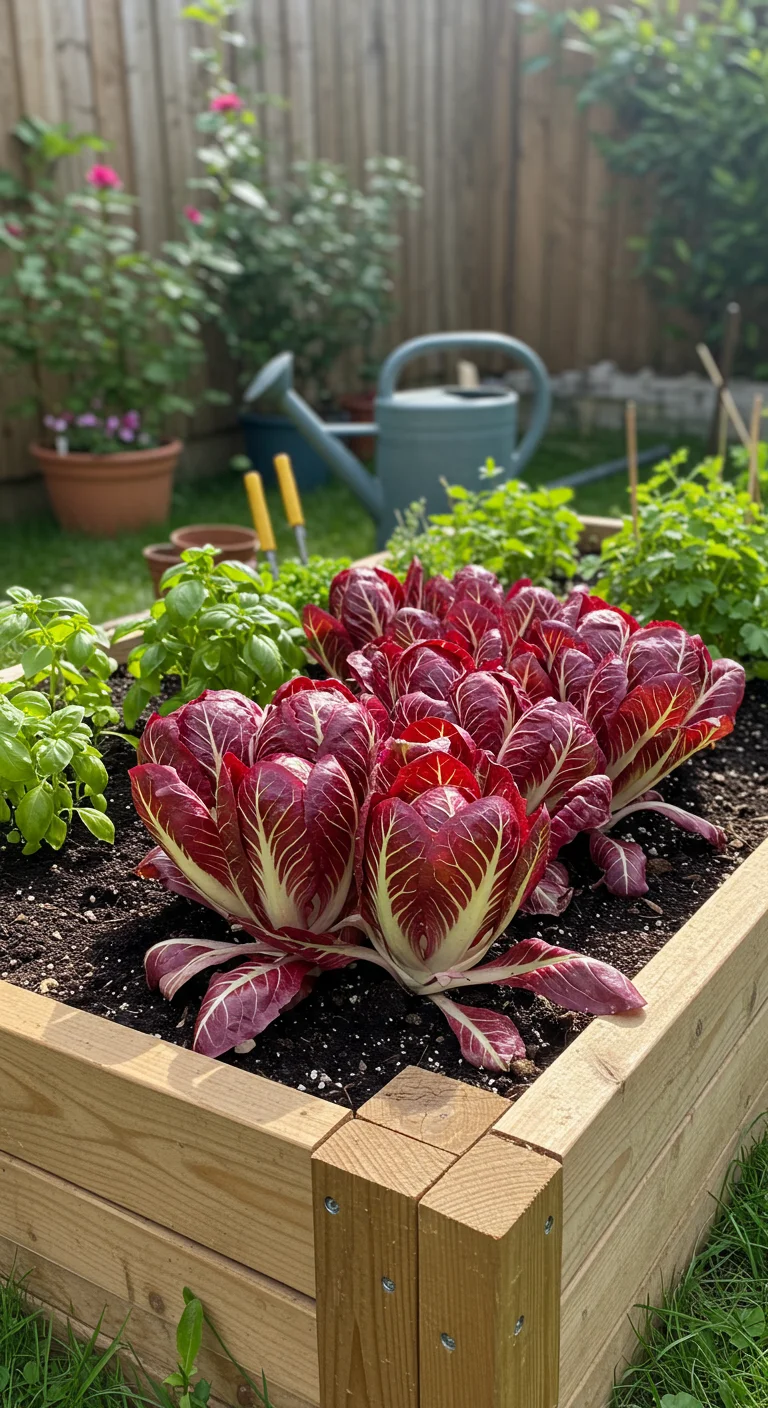
Radicchio, a vibrant and slightly bitter leafy vegetable, is an excellent choice for small raised beds due to its compact growth and striking appearance. Thriving in well-drained soil rich in organic matter, radicchio prefers a pH level between 6.0 and 6.8. For optimal growth, plant seeds in early spring or late summer for a fall harvest, ensuring they receive at least six hours of sunlight daily. Keep the soil consistently moist, but not waterlogged, and consider companion planting with herbs like basil or parsley to enhance flavor and deter pests. Harvest radicchio when the heads are firm and vibrant in color, and enjoy it fresh in salads or grilled as a unique addition to various dishes, elevating your culinary experience right from your garden.
15. Savory Staples: Garlic for the Small Garden
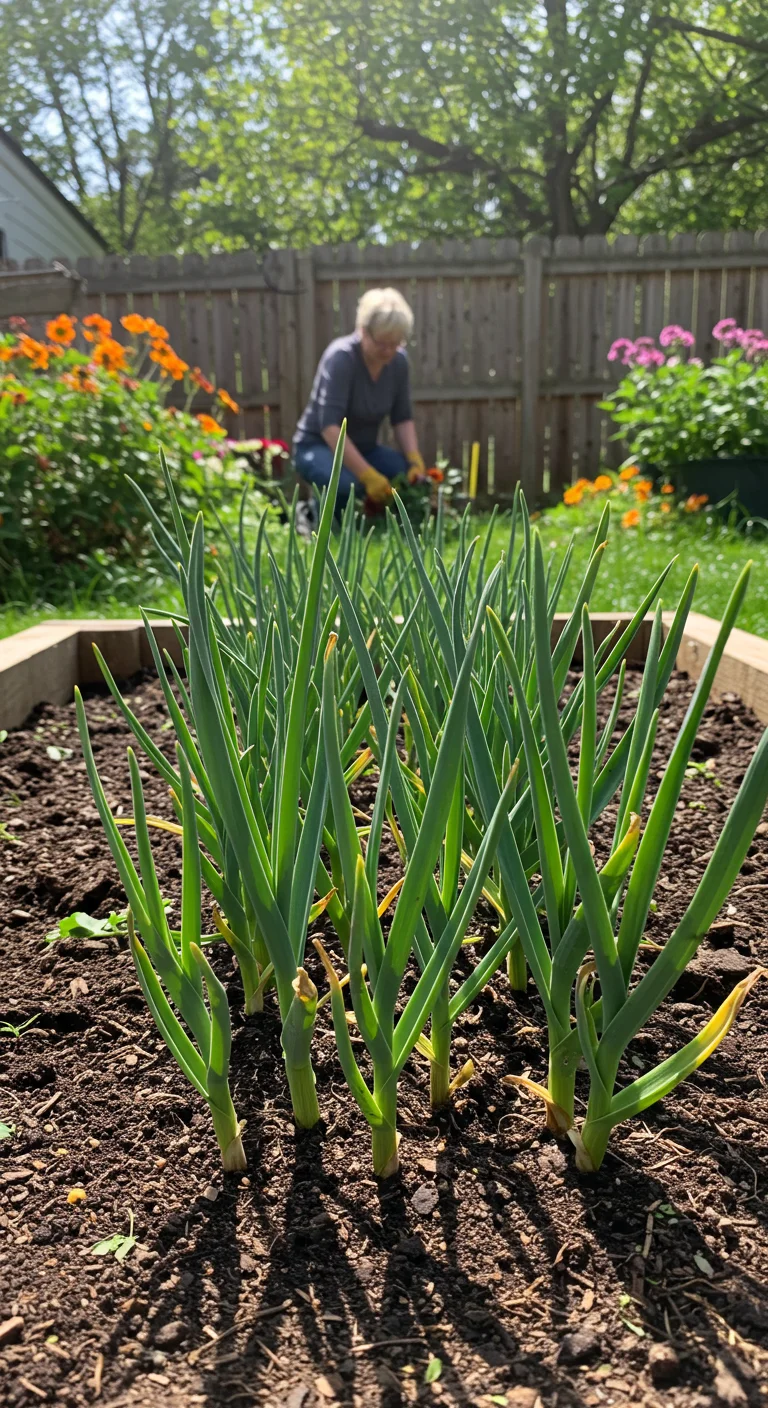
Garlic is an essential ingredient in many kitchens and is surprisingly easy to grow in a small raised bed. To cultivate garlic, plant individual cloves in well-drained, nutrient-rich soil during the fall or early spring, with the pointed end facing up and about 4-6 inches apart. This hardy plant requires minimal care, thriving with regular watering and ample sunlight. As the garlic matures, you’ll notice green shoots sprouting above ground, signaling healthy growth. Harvesting is simple; just pull the bulbs from the soil once the leaves begin to yellow and wilt. Not only does garlic enhance the flavor of your dishes, but it also offers numerous health benefits, making it a savory staple worth including in your small garden.
16. Leafy Legends: Swiss Chard for Year-Round Harvest
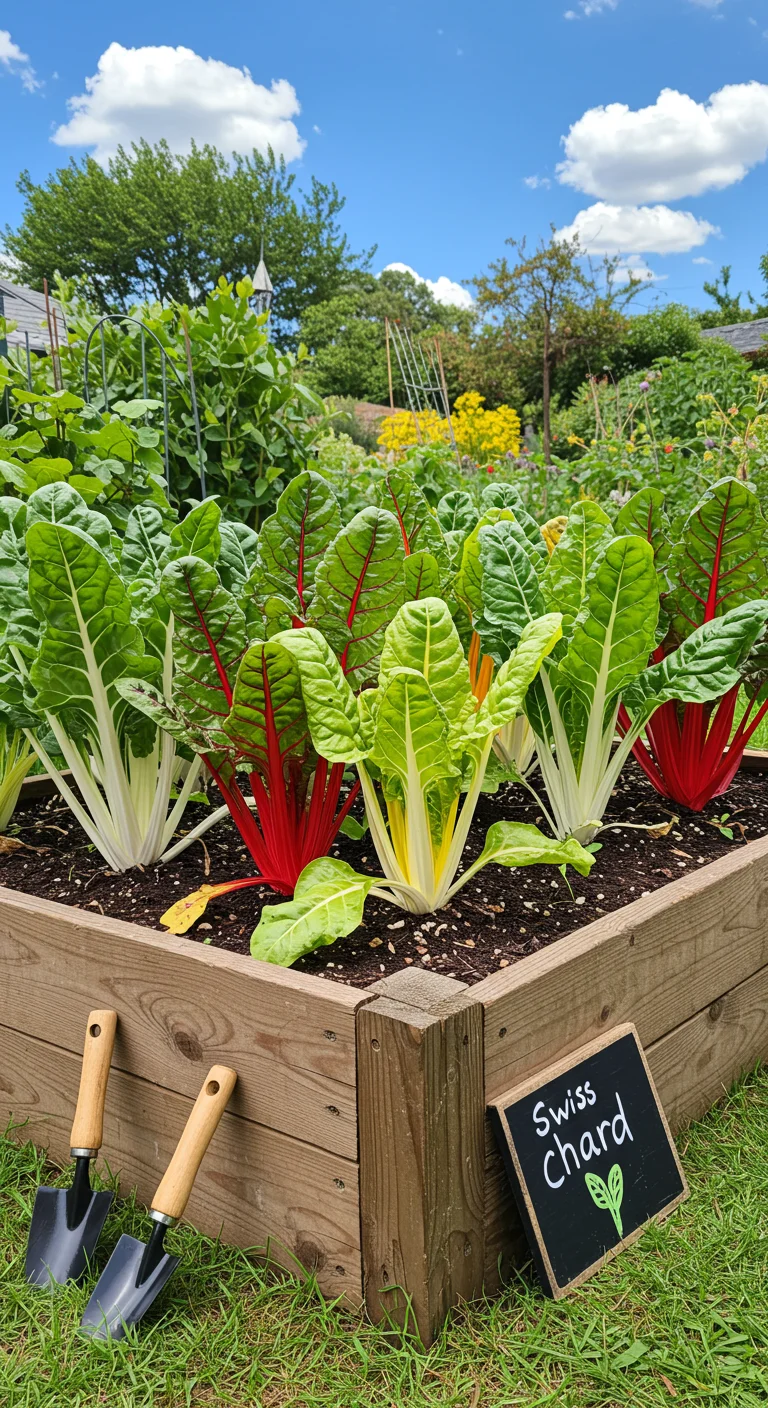
Swiss chard is a versatile and nutrient-rich leafy green that thrives in small raised beds, making it ideal for year-round harvesting. Known for its vibrant, colorful stems and broad, crinkled leaves, Swiss chard can be sown in early spring or late summer for a continuous supply of fresh greens. This hardy vegetable tolerates various weather conditions and can survive light frosts, allowing you to enjoy its harvest well into the colder months. Regular harvesting encourages new growth, and the leaves can be used in salads, stir-fries, or as a cooked side dish. For a successful crop, ensure your raised bed has well-drained soil rich in organic matter, and provide adequate water to keep the plants healthy and thriving throughout the seasons.
17. Succulent Squash: Acorn Squash for Small Beds

Acorn squash is an excellent choice for small raised beds due to its compact growth habit and high yield. These bush-type squash plants typically grow to about 2-3 feet in width, making them manageable in limited space. They thrive in well-drained, nutrient-rich soil and require full sun, so choose a spot that receives at least six hours of sunlight daily. To maximize your harvest, plant acorn squash in late spring after the last frost, and ensure consistent watering while avoiding waterlogging. Regularly feeding the plants with a balanced fertilizer can boost fruit production. As harvest time approaches, you’ll enjoy the vibrant green and golden hues of the squash, perfect for autumn dishes or winter storage, all while making efficient use of your small garden bed.
18. Fiery Flavors: Growing Hot Peppers in Limited Space
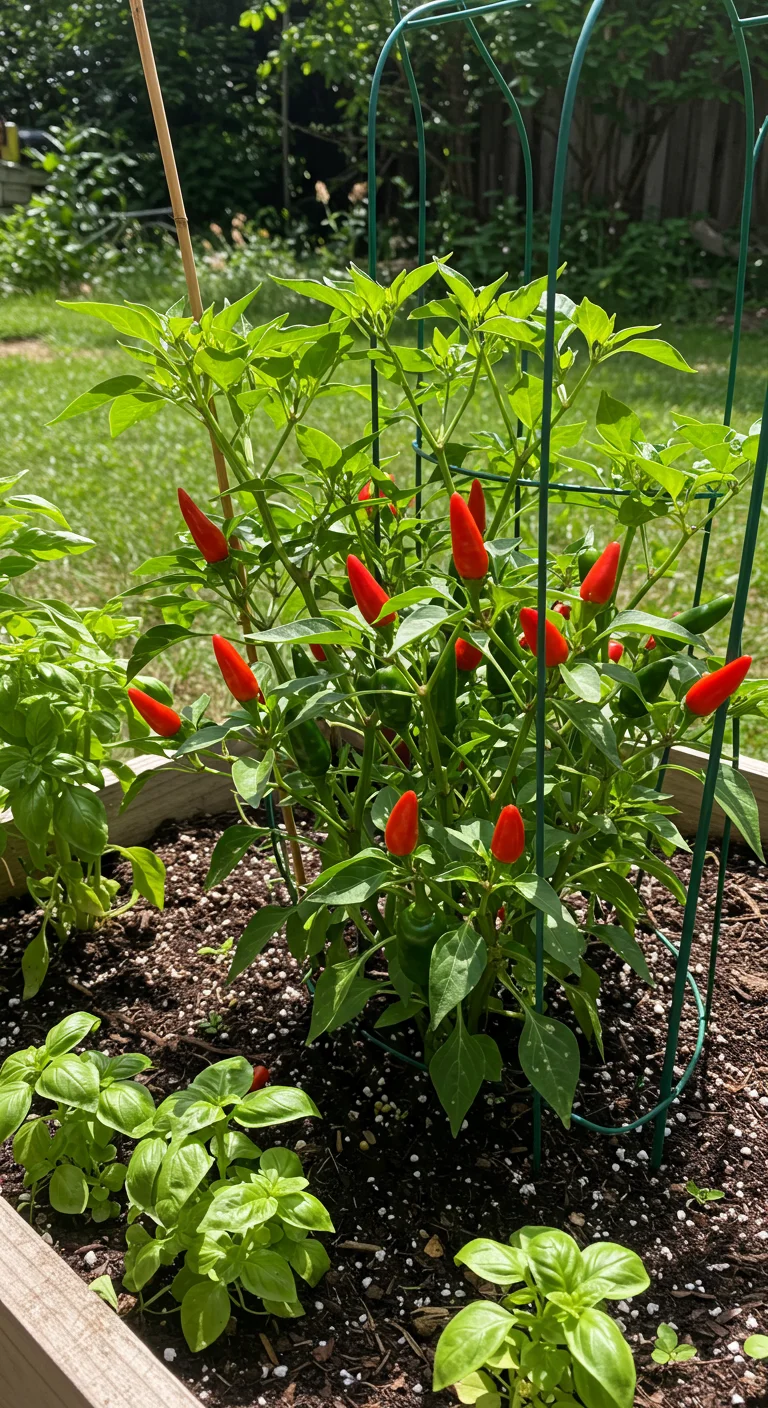
Growing hot peppers in a small raised bed can yield a vibrant and flavorful harvest, even in limited space. Choose compact varieties like ‘Jalapeño’ or ‘Thai Chili,’ which are well-suited for container gardening. Utilize vertical gardening techniques by adding trellises or stakes to allow the plants to grow upward, maximizing your area. Ensure they receive full sunlight for at least six hours a day and maintain consistent watering to promote healthy growth. Incorporating nutrient-rich organic compost into your soil mix will enhance flavor and yield. Additionally, consider companion planting with herbs like basil to deter pests and improve growth conditions. With proper care, you can enjoy a spicy bounty right from your small garden bed.
19. Culinary Classics: Thyme and Oregano in Raised Beds
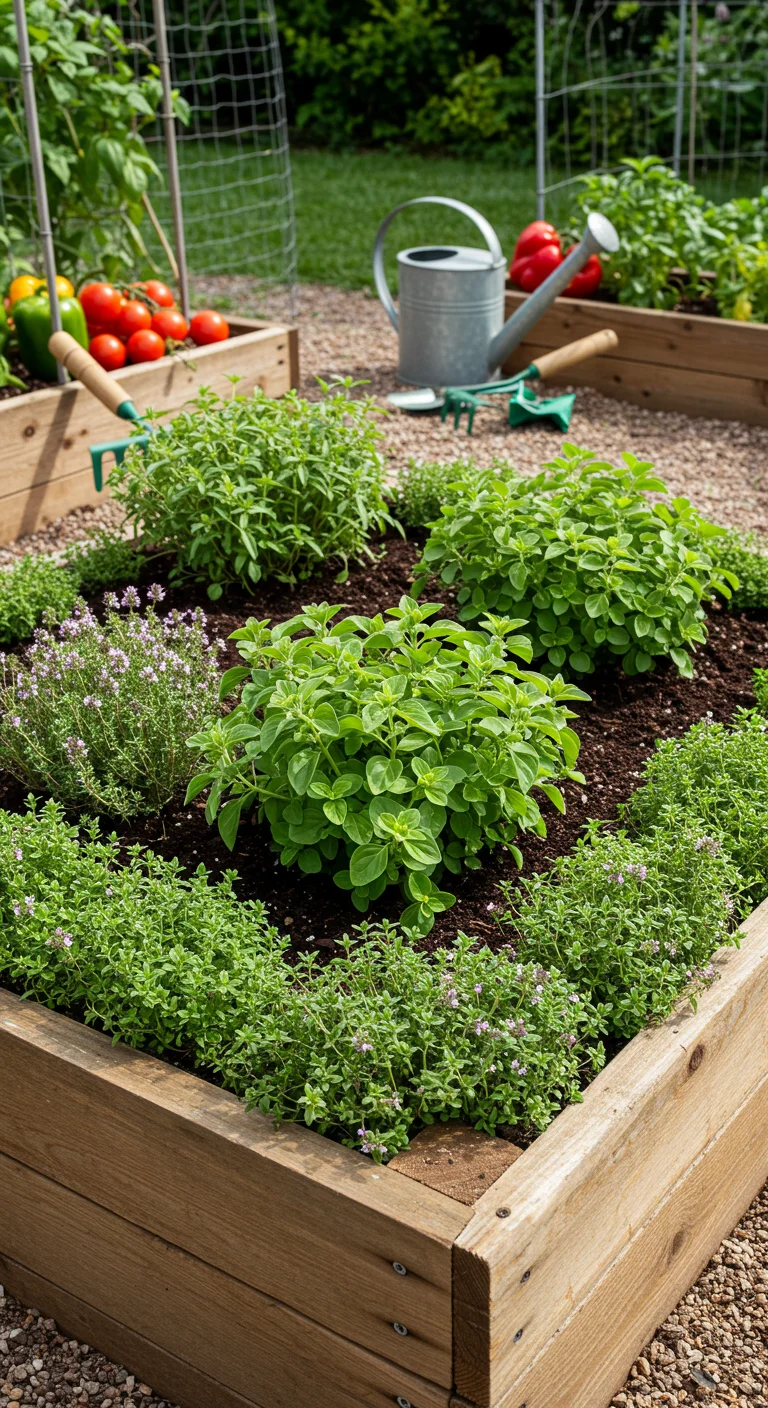
Thyme and oregano are both excellent choices for small raised bed gardens, offering robust flavors that enhance a variety of dishes while being easy to grow. These herbs thrive in well-drained soil and prefer a sunny spot, making them ideal companions for vegetables like tomatoes and peppers. Thyme, with its low-growing habit, can be planted along the edges of your raised bed, while oregano can fill in the center due to its slightly taller growth. Both herbs are drought-resistant once established, requiring minimal watering. Regular harvesting encourages bushier growth, so don’t hesitate to snip off sprigs as you cook! By incorporating these culinary classics, you not only enhance your meals but also attract beneficial pollinators to your garden.
20. Under the Radar: Kohlrabi for Unique Harvests
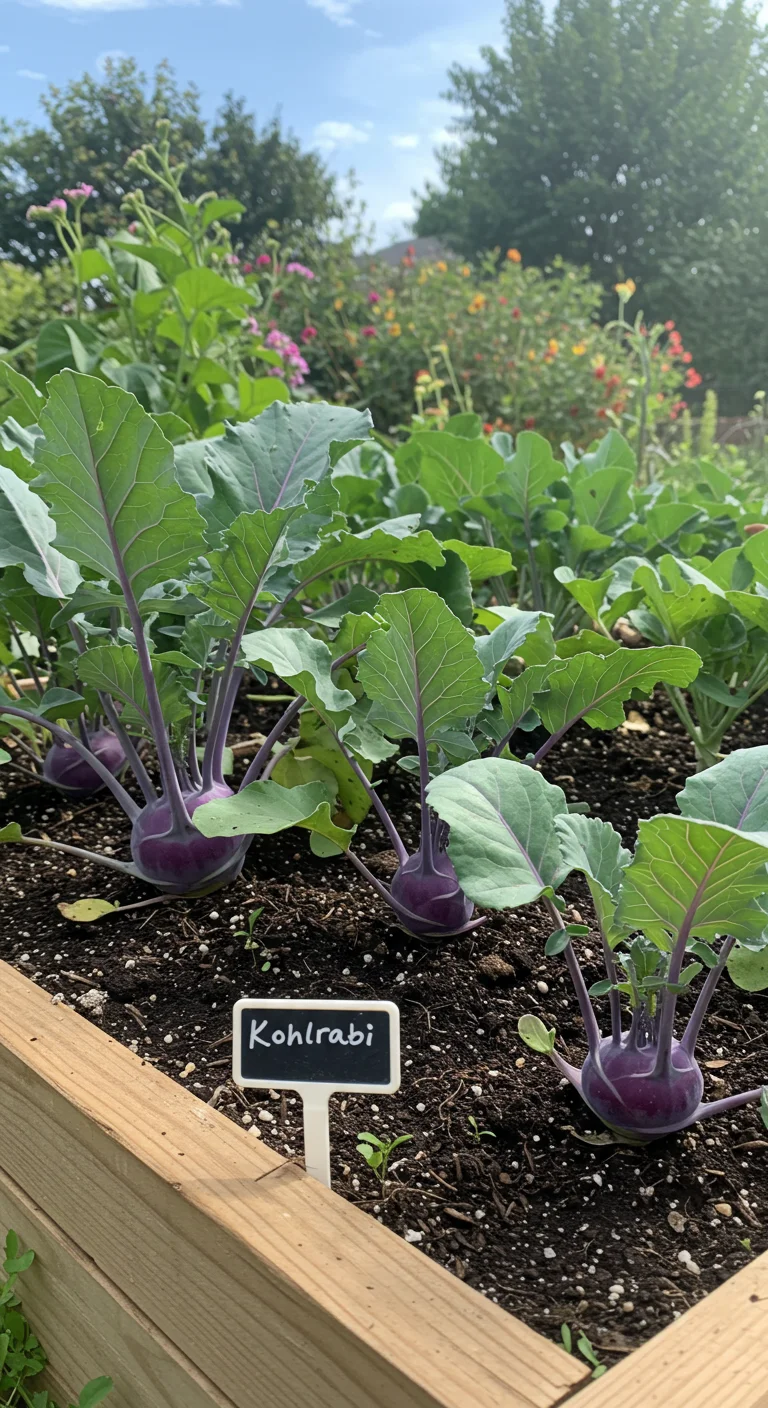
Kohlrabi, often overlooked in the vegetable garden, is a fantastic choice for small raised beds due to its compact growth and unique flavor profile. This versatile vegetable, which can be purple or green, is a member of the cabbage family and thrives in cooler weather. Plant kohlrabi seeds directly in well-drained soil enriched with compost, spacing them about 6-8 inches apart to allow for their bulbous growth. They are fast-growing, typically ready for harvest in just 6-8 weeks, and can be enjoyed raw in salads, roasted, or added to stir-fries. Additionally, kohlrabi’s striking appearance and mild, sweet flavor make it an intriguing addition to your garden and dinner table, perfect for those looking to diversify their vegetable repertoire.
21. Edible Flowers: Nasturtiums for Beauty and Flavor
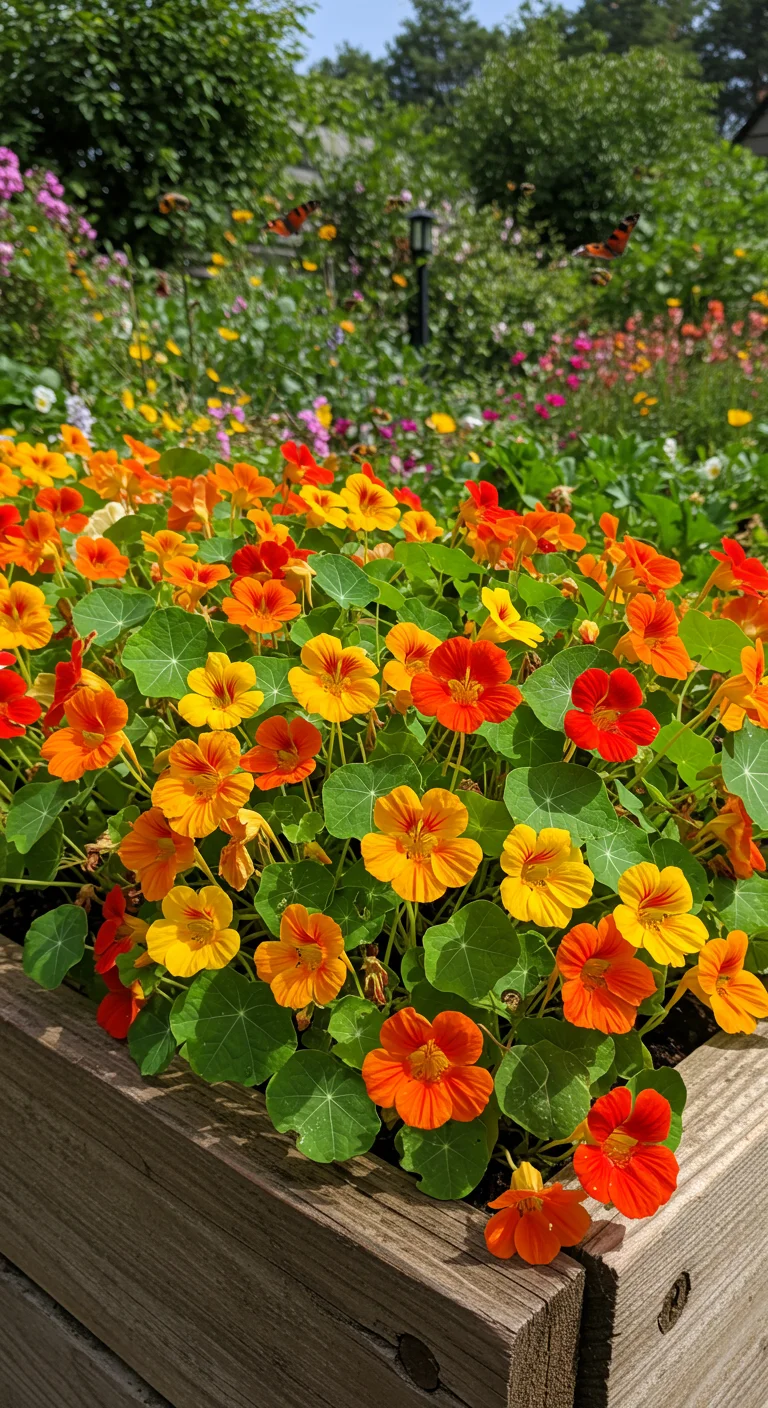
Nasturtiums are not only visually captivating with their vibrant, trumpet-shaped flowers in shades of orange, yellow, and red, but they also offer a peppery flavor that adds a unique twist to salads and garnishes. Thriving in small raised beds, these hardy annuals are incredibly easy to grow, requiring minimal care and thriving in poor soil conditions. They attract beneficial pollinators like bees and butterflies, enhancing the biodiversity of your garden. Additionally, both the leaves and flowers are entirely edible, making them a versatile addition to your culinary repertoire. When planting, consider a sunny location and provide support for climbing varieties, allowing them to cascade beautifully over the edges of your raised bed for both aesthetic and practical benefits.

